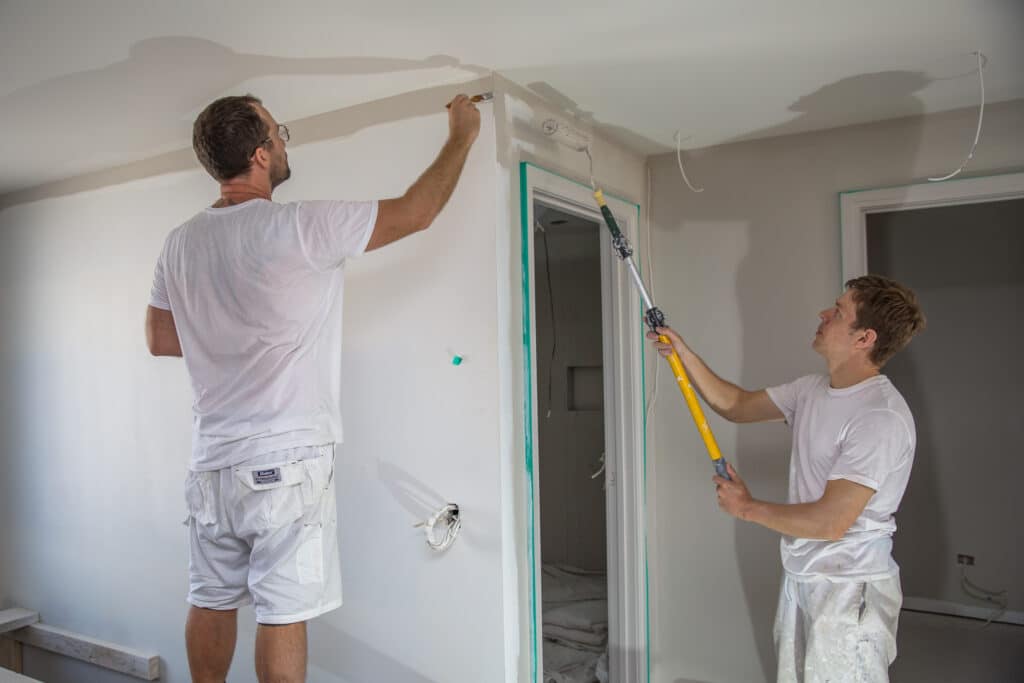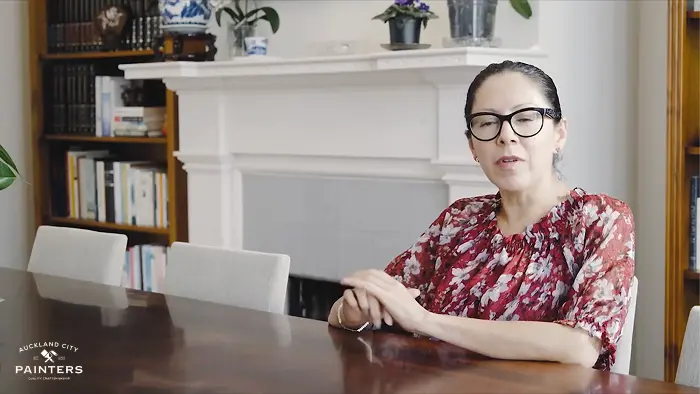To help you achieve a smooth, durable finish that looks great for years, here are answers to some of the most common questions we get asked about how many coats of paint you really need — for walls, ceilings, and new plaster.
How Many Coats of Paint Do I Need?
As a rule of thumb, you should apply at least two coats of paint to any surface. One coat might look acceptable at first, but it rarely gives the depth, colour consistency, and durability you’ll get with two. Applying a second coat strengthens the paint film, improves coverage, and ensures your walls stand up to everyday wear and tear.
High-quality paints like Dulux Wash&Wear or Resene SpaceCote Low Sheen offer scrubbable finishes — ideal for busy family homes. If you’re unsure what system best suits your walls, our Auckland interior painters can guide you through your options.
How Many Coats of Paint on a Wall?
For most walls, two coats of paint are recommended after proper priming or undercoating. However, the exact number depends on the wall’s material and the colour you’re painting over.
- New or bare plasterboard: Always start with a primer or sealer before applying two topcoats.
- Changing from dark to light colours: You may need an extra coat to completely hide the old colour.
- Using cheaper paints: Lower-quality paint often requires more coats to achieve an even finish — which can end up costing more in labour and materials.
That’s why investing in a premium paint system pays off. Brands like Resene, Dulux, and Wattyl provide excellent opacity and long-term durability, helping you achieve a flawless finish in fewer coats.

How Many Coats of Paint on a Ceiling?
For ceilings, one coat may be sufficient if you’re simply freshening up an existing white ceiling. However, two coats will give a brighter, more consistent finish — especially if the surface hasn’t been painted in a while.
If you’re embracing the popular Colour Drenching trend, this means painting your entire room — walls, trims, and ceiling — in the same colour. It creates a dramatic, cohesive look and can make spaces feel larger, calmer, and more modern. To achieve the best effect, you’ll need at least two coats (sometimes three) for rich, even coverage. Trust our Auckland interior painters to deliver crisp lines and seamless colour transitions.
How Many Coats of Paint on New Plaster?
New plaster needs a slightly different approach. The first coat should be a mist coat — a diluted layer of paint that seals the surface and helps subsequent coats bond properly. After that, apply two full coats of your chosen paint for best results.
Always allow each coat to dry fully, and follow the manufacturer’s recommendations for drying times. For bold or deep colours, a third coat may be required to achieve perfect depth and uniformity.

Expert Tip from Auckland City Painters
Every surface tells its own story. Whether it’s new plaster in a Mt Eden villa, high ceilings in a Ponsonby bungalow, or concrete walls in a Takapuna apartment, the right paint system and number of coats can dramatically affect both appearance and longevity. Our team uses proven systems and top-quality products to ensure a lasting result — inside and out.
Need help choosing the right paint or planning your project? Get advice from the Auckland house painters homeowners trust.
Ready to Get Started?
Thinking about repainting? Get in touch with Auckland City Painters today for expert advice, a detailed quote, and a flawless finish that stands the test of time.










